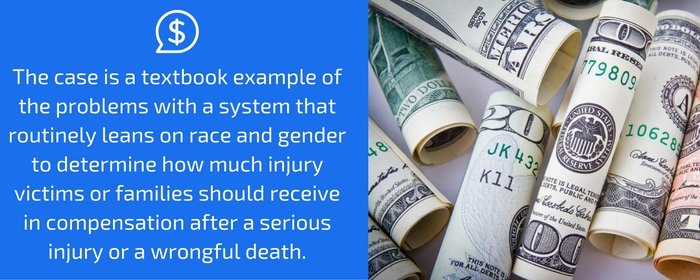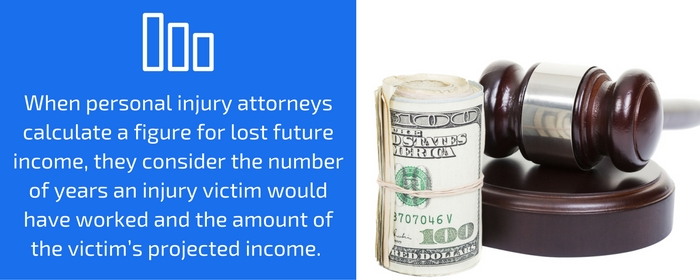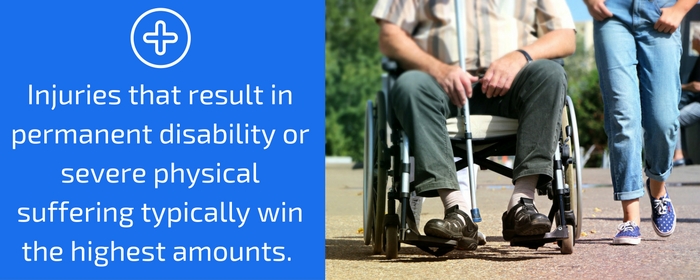Demographics, Discrimination, And Personal Injury Law
According to University of Baltimore law professor Michael Meyerson, “As you peel the onion of discrimination, you realize how embedded it is in our legal system and our society.” You might not realize it, or perhaps you’ve never looked at it this way, but personal injury law in the United States could certainly be called “discriminatory” because male victims and white victims and their personal injury lawyers often receive larger awards than women and members of minorities in comparable cases.
Why? The differences are based on projections of how much more money an individual would have earned over a lifetime if the person has not been injured. Those projections are based on the average earnings and employment levels for each race and gender.
For example, in one Brooklyn case last year, a four-year-old Hispanic boy – mentally disabled after living in an apartment illegally coated with lead paint – was the center of a personal injury trial. Attorneys representing the child’s family asked for $3.4 million, arguing that the child would have had a bright career. Both of his parents were college graduates and his mother held a master’s degree.
The boy could not speak in complete sentences or play with others because he experienced violent hitting and biting fits. The landlord – the defendant in the case – argued that the $3.4 million figure was far too high. Because the boy was Hispanic, the landlord’s attorney contended, the youth was unlikely to complete the advanced education that would earn $3.4 million over a lifetime.
WHAT DID THE JURY DO IN THIS CASE?
Eventually, the jurors determined that the landlord was liable, and they awarded the boy’s family $2 million in damages. After an appeal, the case was settled for $1.9 million. The case is a textbook example of the problems with a system that routinely leans on race and gender to determine how much injury victims or families should receive in compensation after a serious injury or a wrongful death.

In a written opinion, the judge in the Brooklyn case severely criticized the use of ethnicity in projecting future earnings. “Race and ethnicity are not, and should not, be a determinant of individual achievement. To support such a proposition distorts the American Dream,” the judge wrote. “A traditional, automatic, unthinking approach by experts in the field can no longer be tolerated.”
University of Maine law professor Jennifer Wriggins agrees. She tells the Washington Post that the current system for determining projected future incomes in personal injury cases “reinforces past discrimination and pushes it out into the future and endorses it.”
Supporters of the current system insist that it remains the best way to calculate the losses people sustain due to an injury. “If there’s a difference in society, it is what it is. It’s a difference, and the economist’s job is to figure out what would have happened,” forensic economist James Woods told the Post.
IS THIS THE RIGHT TIME TO CHANGE PERSONAL INJURY LAW?
Professors of law and others who study the personal injury system say some reforms may be in order, especially in this time of rising awareness about race, gender, and disparities. Modesto Personal Injury Lawyer Jeffrey Nadrich reminds us that nations including Israel and Canada no longer use demographic averages to make income projections in personal injury cases. Here in the U.S., the Affordable Care Act bans charging women more than men for health insurance.
Although the case in Brooklyn went to trial, more than ninety percent of personal injury claims are settled outside of the courtroom. Out-of-court settlements almost always include confidentiality provisions forbidding the principals from discussing the terms of the settlements, so it’s impossible to determine how big a role racial or gender discrimination may be playing in these cases.
However, even those who accept the basic premise of the system admit that predicting the future is quite frankly impossible. Economists won’t even try to predict how employment gaps and wage gaps will narrow over time.
The future earnings for a typical 20-year-old woman in 1970, based on 1970 figures, would have been misprojected by as much as 28 percent. Forensic economist Bill Brandt admitted to the Post, “If I had used [averages] for females back in 1970, I probably would have underestimated their incomes substantially.”

When personal injury attorneys calculate a figure for lost future income, they consider the number of years an injury victim would have worked and the amount of the victim’s projected income. On average, women and minorities work fewer years and earn less.
Calculations also account for a person’s age and existing wage history at the time of the injury. Demographic averages are more important in cases where there is no established work history or education, such as the cases that involve children.
WHAT ARE THE OTHER CONSIDERATIONS IN A PERSONAL INJURY CASE?
However, the amount of compensation awarded for a personal injury depends primarily on the type and extent of the injury. Whether it be an injury that leads to a physical injury and/or a learning disability, Injuries that result in permanent disability typically win the highest amounts.
Different types of injuries may have different statutes of limitations as well, so anyone who is injured in the New York area will need to consult promptly with a New York City personal injury attorney.

Personal injury claims can be generated by the injuries sustained in traffic accidents, home accidents, tripping accidents, assaults, defective product accidents (product liability), and premises liability cases such as the case in Brooklyn.
Personal injury claims can also be triggered by medical and dental negligence or malpractice or job-related “industrial” conditions like asbestosis, mesothelioma, emphysema, and chronic bronchitis. A New York City personal injury attorney can help an injury victim determine if he or she has sufficient legal grounds to pursue a personal injury claim.
The state of California recently took a positive first step toward eliminating discrimination in personal injury cases. In August 2016, California Governor Jerry Brown signed into law Assembly Bill 2159, which ensures equal treatment for all Californians filing personal injury claims, regardless of an injury victim’s immigration status.
Prior to Assembly Bill 2159, when an undocumented immigrant working in California was injured, any compensation for the loss of future earning capacity had to be based on the wages that the immigrant would have earned in his or her nation of origin rather than what the worker would make in California.
Assembly Bill 2159 directly addresses the discrimination. The new statute requires California’s courts to consider all personal injury plaintiffs equally and without regard to a person’s nation of origin or legal immigration status.
It’s only in one state, and it only deals with one aspect of discrimination, but California’s Assembly Bill 2159 could signal the beginning of the end for gender and racial discrimination in personal injury cases throughout the United States.

